Twelve local health departments (LHDs) cover all areas of the State and provide local public health services. There are six single-county LHDs with another six LHDs covering the other 23 Utah counties. The State utilizes the local health departments to administer many of the services required by State law. While this line item is for the General Fund block grant funding only, the Utah Department of Health contracts with the LHDs for over 45 other services from a variety of funding sources. The funding for these contracts is appropriated to and included in the various line items of the Department. Additionally, LHDs contract with the Department of Environmental Quality to provide various services.
LHDs summarize their mission as preventing, promoting and protecting the public health.
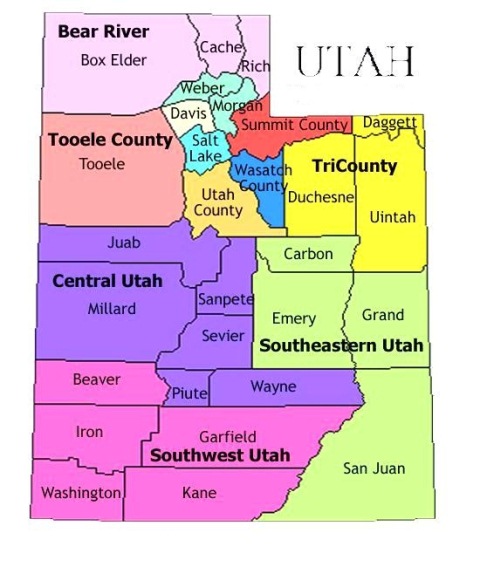
During the 2015 General Session, the Legislature appropriated for Fiscal Year 2016, $2,137,500 from all sources for Local Health Departments. This is a 0 percent change from Fiscal Year 2015 revised estimated amounts from all sources. The total includes $2,137,500 from the General/Education Funds, a change of 0 percent from revised Fiscal Year 2015 estimates.
The rankings for health outcomes of local health departments in the chart below comes from http://www.countyhealthrankings.org/utah.
Healthiest Local Health Departments as per www.countyhealthrankings.org
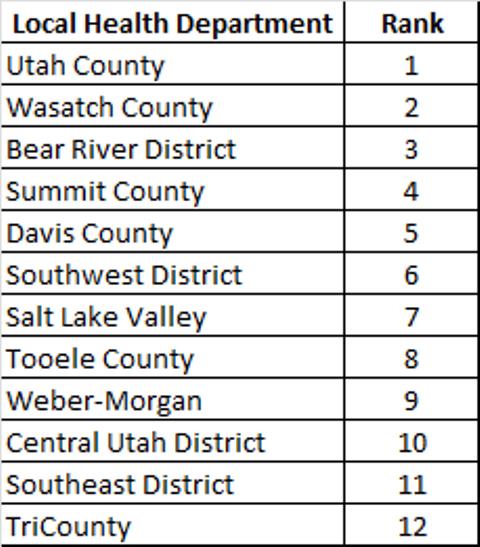
Number of Local Health Departments That Maintain a Board Of Health That Annually Adopts a Budget, Appoints a Local Health Officer, Conducts an Annual Performance Review, and Reports to County Commissioners on Health
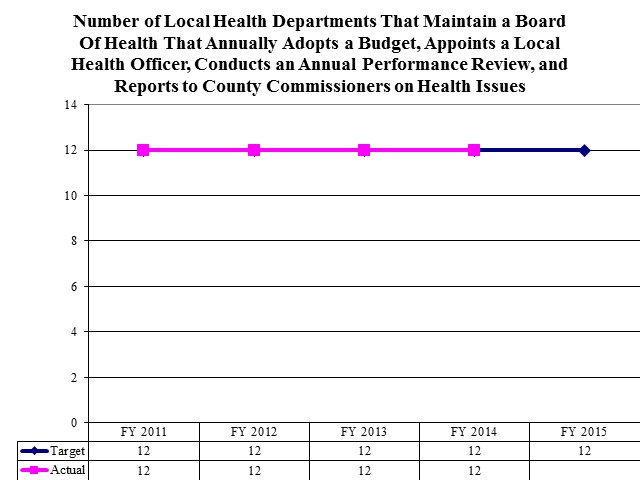
Number of Local Health Departments That Maintain a Program of Environmental Sanitation
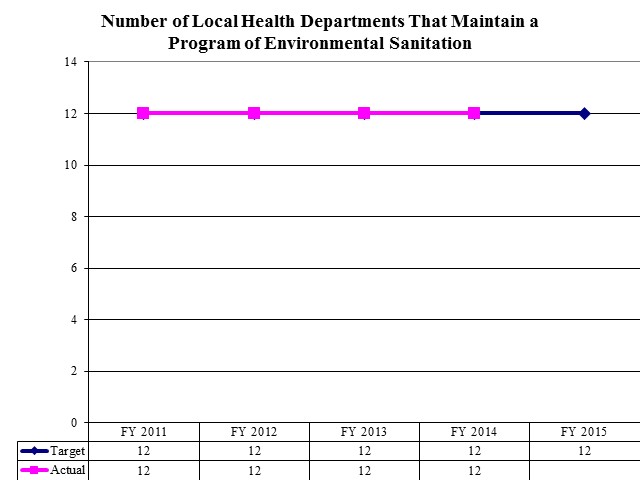
Number of Local Health Departments That Provide Communicable Disease Epidemiology and Control Services
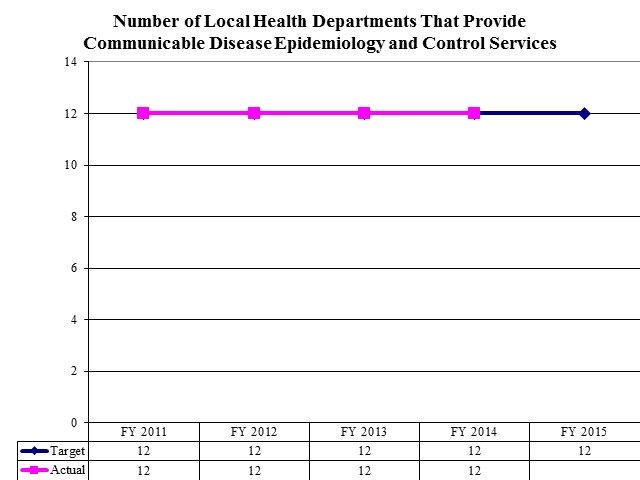
Title 26a, Local Health Authorities, of the Utah Code governs local health departments. This title establishes local health departments, local boards of health, powers and duties of the departments, and various authorized funding mechanisms. In addition, several statutes in the Utah Health Code detail responsibilities and enforcement by local health departments.
- UCA 19-1-201 details the cooperative efforts that should take place between Local Health Departments and the Department of Environmental Quality.
- UCA 26-1-23 prohibits a local health department from establishing standards or regulations that are more stringent than those established by federal law, state statute, or Department of Health rules, unless the local health department makes a written finding that federal and state laws are not adequate to protect public health.
- UCA 26-15 outlines the Health Department's efforts, in conjunction with those of local health departments, in relation to general sanitation, including those dealing with the Indoor Clean Air Act.
- UCA 26-15a outlines the Department's efforts, in conjunction with those of local health departments, in relation to food safety.
- UCA 26-38 is the Utah Indoor Clean Air Act, which restricts smoking in indoor public places, and establishes enforcement authority and penalties for noncompliance.
- UCA 26-42 establishes civil penalties for individuals and/or licensees that sell tobacco products to underage minors.
- UCA 26a establishes the following five duty areas:
- Enforce State-created minimum performance standards
- Enforce more than 200 rules and regulations for the State
- Investigate and control diseases affecting public health as well as coordinate with the State
- Inspect public and private schools
- Local disaster and disease response plan
- UCA 26A-1-106 delegates responsibility for seven basic public health services:
- Public health administration and support services
- Maternal and child health
- Communicable disease control, surveillance, and epidemiology
- Food protection
- Solid waste management
- Waste water management
- Safe drinking water management
- UCA 26A-1-115 indicates that counties have the responsibility to adequately fund their LHDs. There is a local match requirement for State funds, which is 20% as established through rule.
- UCA 53A-11-305 details the responsibilities and financing of immunizations for students.
Minimum Performance Standards
Statute provided for the Department of Health and the Department of Environmental Quality to create the minimum performance standards for LHDs in the following areas: administration, personal health services, and environmental health programs.
In the area of administration, the administrative rules in R380-40-6 require employment of the following individuals:
- Qualified local health officer
- Registered nurse
- Health educator
- Registered sanitarian (environmental health)
In the area of personal health services, the administrative rules in R380-40-7 state the following as requirements:
- Health promotion and risk reduction help assist residents to:
- obtain the necessary knowledge, skills, capacity, and opportunity to improve and maintain individual, family, and community health
- use preventive health services, practices, and facilities appropriately
- understand and participate, where feasible, in decision-making concerning their health care
- understand and encourage compliance with prescribed medical instructions
- participate in community health decision making
- prevent or delay premature death, disease, injury, or disability through services that encourage the long-term adoption of healthy behavior
- Communicable disease control to include: reporting, surveillance, assessment, epidemiological investigation, and appropriate control measures for vaccine-preventable diseases, sexually transmitted diseases, tuberculosis, AIDS, and other communicable diseases to attempt to prevent, control, or prevent and control epidemics, cases of vaccine-preventable diseases, and the spread of sexually transmitted diseases, AIDS, and tuberculosis.
- Infant and child health to help prevent illness, injury, and disability; reduce the preventable complications of illness, injury, and disability; maintain health; and foster healthy growth and development. These services shall include: periodic health assessments; screening for and early identification of health and developmental problems; and provision of appropriate treatment, education, or referral.
- SIDS counseling (Sudden Infant Death Syndrome) - offer families counseling services or refer to counseling services.
- Preventative health and instruction for school-aged children - advocate and promote.
- Identify injury control needs and develop services to reduce the occurrence of injury and unintentional death.
- Chronic disease services which may include screening, referral, education, promotion, and preventive activities related to the prevention of cardiovascular disease, cancer, diabetes, and other chronic diseases to reduce premature morbidity and mortality associated with these diseases.
- Family planning including information to clients who request it and referral in accordance with State law.
- Healthy families through access to risk appropriate preconceptional, interconceptional, prenatal, intrapartum, and postpartum health services with the objective of lowering the frequency of maternal and infant death, disease and disability, and promoting the development and maintenance of a healthy, nurturing family unit.
- Dental health services which may include dental health screening, referral, education, promotion, and preventive activities.
In the area of environmental health programs, the administrative rules in R380-40-8 state the following as requirements:
- The maintenance of an inventory, directory, or listing of establishments; inspections including corrective actions; plan reviews; an information management system; and the dissemination of public information for the following facilities:
- Food service establishments
- Public swimming pools
- Subsurface waste water systems
- Institutions, public facilities, and indoor and outdoor facilities
- Safe drinking water to include: the maintenance of an inventory, directory, or listing of systems; inspections including corrective actions; an information management system; and the dissemination of public information.
- Nuisance complaints to include: inspections including corrective actions; an information management system; and the dissemination of public information.
- Vector control (mosquito abatement) to include: complaint inspections including corrective actions; an information management system; and the dissemination of public information.
- Air quality and air pollution control to include: conducting limited inspections of visible emissions including corrective actions; an information management system; and the dissemination of public information.
- Injury control to include: inspections including corrective actions; an information management system; and the dissemination of public information.
- Indoor clean air to include: inspections of public facilities including corrective actions; an information management system; and the dissemination of public information.
- Solid waste to include: an inventory, directory, or listing of locations; inspections including corrective actions; an information management system; and the dissemination of public information.
The block grant is distributed to the LHDs according to a formula. The pass-through funding is appropriated to the Health Department as a separate line item, in order to maintain a clean record of the funding and to distinguish between the Department's administrative budget and the local health departments' State-funded services.
For analysis of current budget requests and discussion of issues related to this budget click here.
COBI contains unaudited data as presented to the Legislature by state agencies at the time of publication. For audited financial data see the State of Utah's Comprehensive Annual Financial Reports.